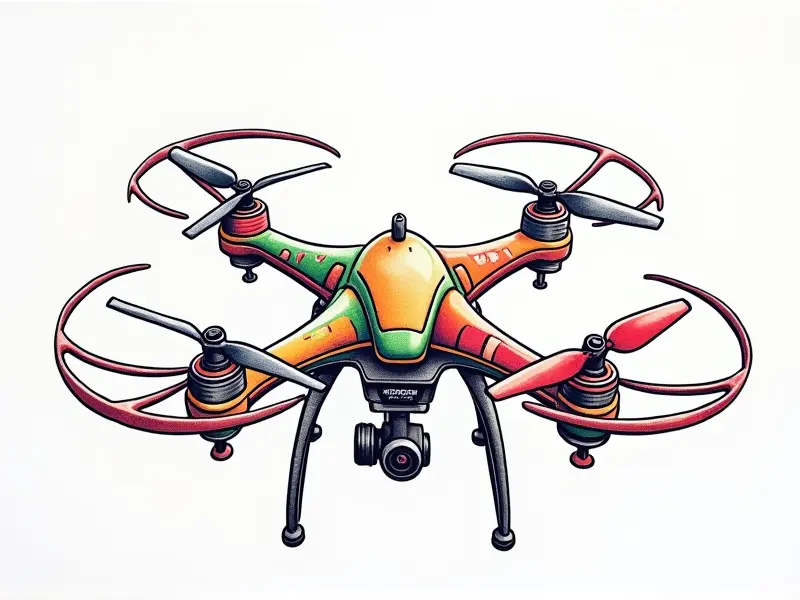How do RC planes work?

How Do RC Planes Take Flight?
The journey of an RC plane begins with the understanding that these miniature aircraft are controlled by radio signals sent from a ground-based transmitter. The process starts when you power up your transmitter and connect it to the receiver on board the plane. Once powered, the motor spins the propeller, generating thrust which pushes the plane forward.
The lift required for flight is created through the wings' design, specifically their airfoil shape. As the wing moves through the air, it creates a pressure difference between its upper and lower surfaces, resulting in an upward force that counteracts gravity.
Inside the Mechanics of RC Aircraft
The mechanics of RC aircraft are fascinatingly intricate yet straightforward to understand once broken down into components. At the heart of every RC plane is the motor, which converts electrical energy from a battery pack into mechanical energy through rotation. This rotational force is then transferred via a propeller to generate thrust.
Electronics play a crucial role in controlling various aspects such as speed and direction. Servos are small motors that control the movement of flaps, rudders, and elevators, allowing precise adjustments for steering and stability during flight.
Understanding RC Plane Controls
The controls of an RC plane consist primarily of a transmitter with sticks and buttons to manipulate pitch (elevators), roll (ailerons), yaw (rudder), and throttle. These inputs are transmitted wirelessly to the receiver on board, which then activates servos to move control surfaces accordingly.
RC Plane Propulsion Explained
The propulsion system of an RC plane is critical for generating thrust necessary for takeoff and sustained flight. Most commonly used motors include brushed and brushless types, each with unique characteristics. Brushed motors are simpler and less expensive but have a shorter lifespan due to wear from brushes rubbing against the commutator.
Brushless motors, on the other hand, offer higher efficiency and longer life as they lack moving parts that can degrade over time. They require electronic speed controllers (ESCs) to manage power delivery accurately.
Mastering RC Plane Aerodynamics
Aerodynamics is fundamental in understanding how an RC plane stays aloft. Key concepts include lift, drag, thrust, and weight. Lift is generated by the wing's airfoil shape as it interacts with airflow, creating a pressure differential that pushes the aircraft upward.
Drag opposes forward motion and can be minimized through careful design of wings and fuselage to reduce turbulence and streamline shapes. Thrust must overcome drag for sustained flight, while weight (including fuel) affects stability and maneuverability.
Anatomy of an RC Airplane
The anatomy of an RC plane includes several critical components:
- Fuselage: The main body that houses the electronics and battery pack.
- Wings: Generate lift through their airfoil shape.
- Tail Section: Consists of stabilizers, elevators, rudder, and ailerons for stability and control.
- Motor & Propeller: Provide thrust necessary for takeoff and flight.
RC Plane Motors: How They Work
RC plane motors convert electrical energy into mechanical energy through electromagnetic principles. Brushed motors use a commutator to switch current direction, while brushless motors utilize permanent magnets in the rotor and electromagnets in the stator.
The choice between brushed and brushless depends on factors like cost, efficiency, and longevity. Brushless motors are generally preferred for their superior performance and durability.
Flying RC Planes: A Beginner's Guide
For beginners venturing into the world of RC planes, it’s essential to start with basic knowledge and practice. Begin by selecting a trainer model designed specifically for novices, which typically features forgiving aerodynamics and stability-enhancing features.
- Choose the Right Equipment: Opt for reliable components such as high-quality motors, servos, and ESCs.
- Learn Basic Controls: Familiarize yourself with pitch, roll, yaw, and throttle controls on your transmitter.
- Practice Takeoffs & Landings: Master the art of controlled takeoffs and smooth landings to avoid damage.
The Science Behind RC Plane Control
The science behind controlling an RC plane involves understanding how control surfaces interact with airflow. Elevators adjust pitch, ailerons manage roll, and rudders steer yaw. These movements are controlled by servos activated via radio signals from the transmitter.
Effective control requires balancing these forces to maintain stability during flight maneuvers such as turns, climbs, and descents.
Breaking Down RC Plane Components
The components of an RC plane include:
- Battery Pack: Supplies power for the motor and electronics.
- Receiver: Receives signals from the transmitter to control servos.
- Servos: Small motors that move control surfaces like flaps, rudders, and elevators.
Exploring RC Plane Control Surfaces
Control surfaces are pivotal in maneuvering an RC plane. Elevators adjust pitch by changing the angle of attack on the tail section, ailerons manage roll by differentially adjusting wing lift, and rudders steer yaw by altering direction.
Conclusion
Mastery over RC planes involves understanding their mechanics, aerodynamics, and control systems. By familiarizing yourself with these aspects, you can enhance your flying skills and enjoy the thrill of controlling these miniature marvels of aviation technology.

